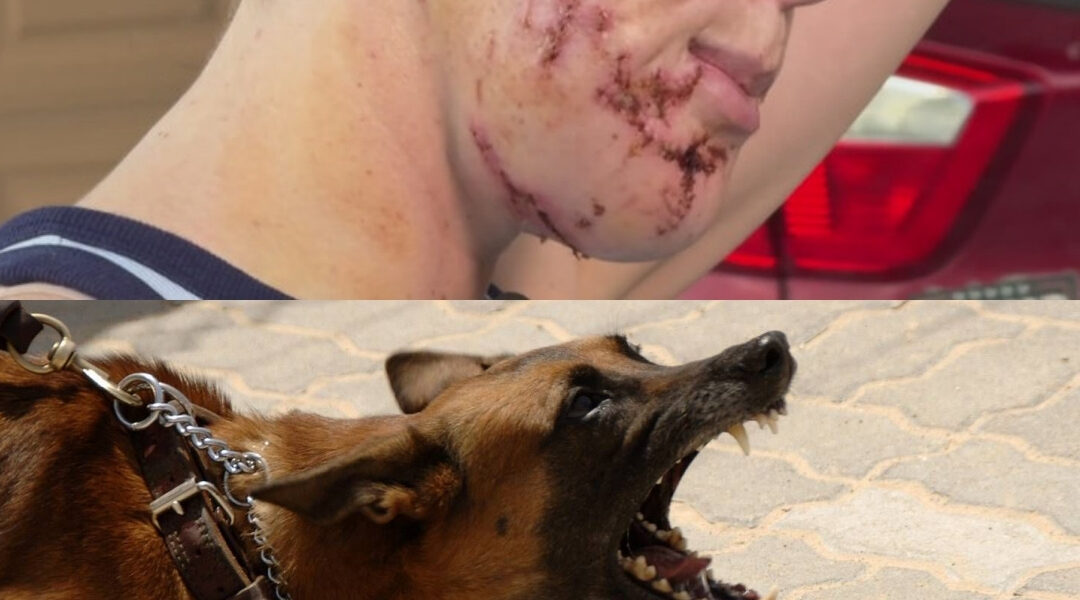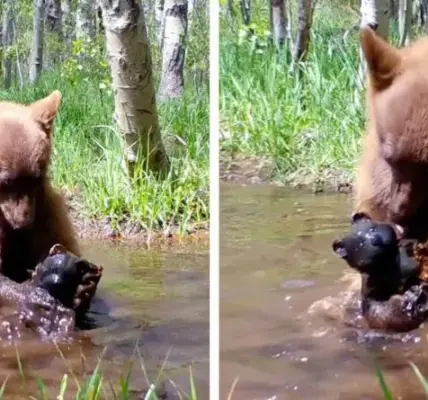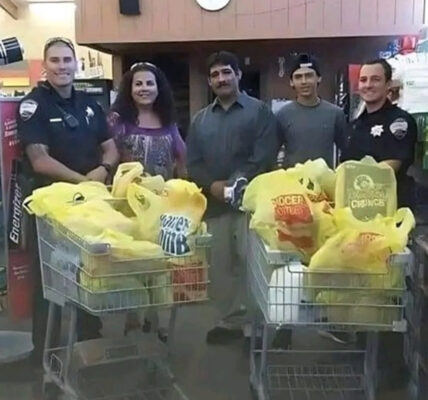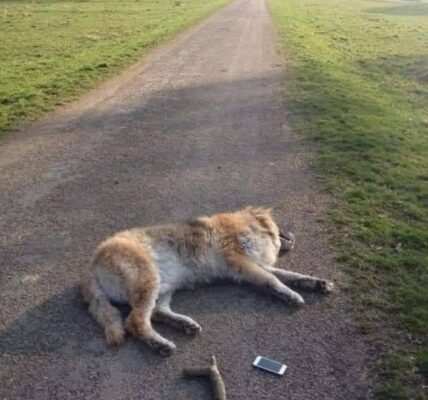On a quiet Friday night in Arizona, in a home filled with the familiar sounds of children’s voices and dog paws skittering along the floor, one mother’s world turned into a nightmare she never imagined she would live through.

And the dog that nearly killed her wasn’t a stranger.
He was family — or at least, he had been treated like it.
His name was Odin.
A massive 5-year-old mastiff with deep brown eyes and a slow, lumbering walk, Odin was the kind of dog that made people soften instantly. He had been staying with the Newell family for a month — long enough to relax into the rhythm of their home, long enough for the children to love him, long enough for Cara to trust him completely.
He slept beside her bed.
He napped on the couch with her.
He played gently with her dogs, Malibu and Korra.
He had never growled, snapped, or shown even a flicker of aggression.
And then, without warning, everything changed.
The First Sign Something Was Wrong
That evening had started like any other. Dinner, laughter, bedtime routines. Cara was tired but content — the kind of exhausted that comes from loving your children and taking care of a busy home.
But then she heard it.
A low growl.
A scuffle.
A sudden, frantic burst of snarling.
Malibu and Korra — her two female dogs — had erupted into a fight.
The children came running, their voices panicked, almost breaking.
“Mom! Stop them! Please, Mom, make them stop!”
Cara reacted instinctively. She couldn’t let her kids watch their dogs tear into each other. She reached in, grabbing collars, pushing bodies apart, doing what millions of dog owners have done without thinking.
She separated them.
She kept her kids safe.
And she thought the worst was over.
But in that chaos, in that split-second of distraction, someone accidentally opened the door.
And Odin stepped through.
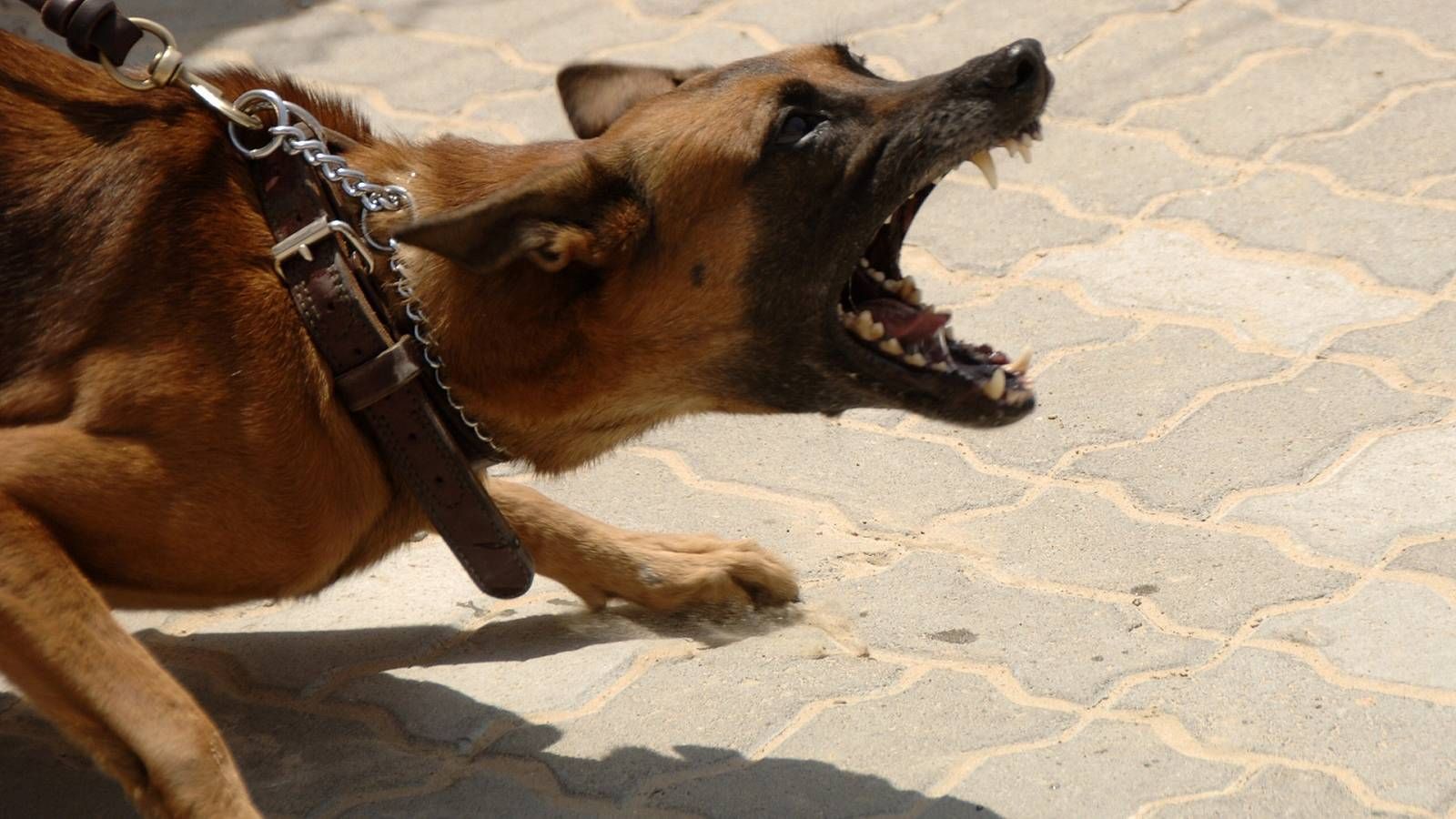
The Moment Everything Broke
There was no warning bark.
No growl.
No stiffening posture.
Odin walked straight toward Cara with a silence that felt almost eerie — and then he launched.
His jaws found her back first.
Then her arm.
Then her face.
Cara heard the sounds before she felt the pain — the wet, horrifying chomp of pressure on bone, the deep animal growls vibrating through her skin. Later, she would say the memory replayed in her mind like an echo she couldn’t shut off.
She fell to the ground, trying to shield her head, her only thought cutting through the noise like a blade:
“I cannot die in front of my children.”
The Children Who Became Heroes
Her children — just 7 and 8 years old — were screaming. They ran to the Alexa devices, begging them to call 911, but none responded. Technology failed them.
But they did not freeze.
They did not run.
They fought.
Those two small children grabbed at Odin’s collar, pulled his weight, screamed his name, hit him, did anything they could to draw his focus away from their mother. And somehow, impossibly, they managed to pull him off her long enough for her to crawl free.
“There’s no way I would’ve made it out of there without my kids,” Cara said later, tears welling. “They saved my life.”
It’s one thing to call someone a hero.
It’s another to witness what heroism looks like in bodies so small.
A Race Against Time
When the rescuers arrived, Cara was barely conscious. Odin had torn part of her ear, shredded her arm, ripped into her jaw, and left deep wounds across her back. Blood soaked her clothes. The children were trembling, clinging to the paramedics, asking over and over, “Is my mom going to die?”
Cara doesn’t remember the ambulance ride.
She does remember a doctor’s voice saying,
“We need to operate now.”
The next morning, she underwent hours of reconstructive surgery — stitching, grafting, rebuilding the parts of her face and body that Odin had torn apart.
She woke up swollen, aching, but alive.
And more than anything, she woke up grateful.
“I keep thinking about how close I came,” she whispered. “I could have died. My kids would have watched me die.”
The Aftermath No One Sees
Healing from wounds like these doesn’t stop when the stitches close.
Her children have nightmares.
They flinch at sudden sounds.
They replay the attack in their minds, their bodies going rigid when they remember the weight of Odin’s body or the sight of their mother covered in blood.
Cara holds them. She reassures them. But she knows they will need help — therapy, time, and reminders that they are safe now.
And she knows she must heal too, not just physically, but emotionally.
Because Odin wasn’t a random dog.
He was a dog she trusted — deeply.
That betrayal leaves its own scar.
Why It Happened
Cara has replayed the moment over and over in her mind, trying to understand what triggered Odin.
Her conclusion is painful but clear:
The fight between her two female dogs awakened something in him — a surge of instinct, dominance, confusion, or panic. Had the house been quiet that night, he would’ve walked through the door wagging his tail like he always did.
“I’ve always heard people say never get in the middle of a dog fight,” she said. “I thought it was just advice. Now I know — it’s real. You can die.”
And she says those words not dramatically, but with the quiet certainty of someone who came close.
Her Warning to Others
Cara isn’t sharing her story for attention.
She’s sharing it because she survived — barely — and she knows someone else might not.
She wants people to understand:
Even good dogs can snap.
Even familiar dogs can change under stress.
Even loving dogs can be dangerous in the wrong moment.
“It could happen to anyone,” she says. “And I don’t want anyone else to go through what we did.”
She is healing.
Her children are healing.
But she hopes her pain becomes someone else’s protection.
Because the truth is simple:
One moment changed their lives.
One door opened.
One instinct was triggered.
And one mother decided — with every ounce of strength in her body — that she would not die in front of her children.
